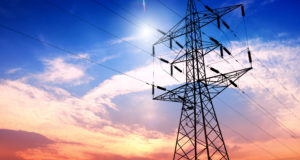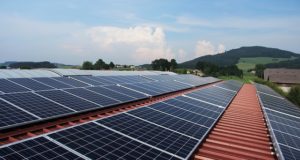In an attempt to further diversify the nation’s energy production sources, the U.S. government has announced new funding intended to promote geothermal energy research and development. Up to $70 million in funding toward geothermal technological advances will be made available over the course of the next three years. This announcement from the Department of Energy (DOE) highlights the government’s interest in promoting alternative energy resources, with hopes that government investments in this sector will attract private investments and further boost research.
 To date, geothermal is an expensive alternative energy source to pursue due to its higher initial installation costs as compared to wind, solar, and hydroelectric power generation. The $70 million in funding is geared toward assisting private development of less costly methods to locate and access geothermal power, as well as to improve techniques for drilling and reservoir engineering. The primary purpose for this is developing technology to support geothermal power plants; however, any advances in that area will also impact and improve residential geothermal systems.
To date, geothermal is an expensive alternative energy source to pursue due to its higher initial installation costs as compared to wind, solar, and hydroelectric power generation. The $70 million in funding is geared toward assisting private development of less costly methods to locate and access geothermal power, as well as to improve techniques for drilling and reservoir engineering. The primary purpose for this is developing technology to support geothermal power plants; however, any advances in that area will also impact and improve residential geothermal systems.
The DOE estimates that construction of new geothermal power plants could potentially add 30 gigawatts of energy to the national power supply. This presents a major increase from the current supply of approximately 3,000 megawatts from this renewable resource. The United States currently has 77 geothermal plants online providing that energy, which is comparable to burning either 6 million short tons of coal or 25 million barrels of oil – both of which are non-renewable resources – in one year.
Geothermal energy presents two key advantages for the national power supply: first, the western portion of the United States has an abundance of appropriate geothermal sites; second, it is a renewable resource with a low cost per kilowatt hour after the initial construction phase. A comparison done on per-kilowatt expense shows that geothermal energy costs approximately 3.6 cents per kilowatt hour while coal-based energy costs an average of 5.5 cents per kilowatt hour. In theory, the lower cost should translate to savings on the consumer’s electric bill.
As previously mentioned, a portion of the $70 million research fund is intended to help establish more efficient and less costly methods of determining appropriate sites for geothermal power plants. While the western portion of the United States is rich in geothermal sites, the issue is finding specific sites that can provide the highest amount of power while requiring the lowest construction costs. Volcanic regions provide the greatest energy benefits, but these areas tend to be earthquake-prone and require specific construction elements to be as earthquake-proof as possible.
Some regions, however, have excellent sites that do not require the additional heavy construction work. For example, a geothermal plant constructed in Idaho was situated in a region that can potentially provide more than double the amount of power required by the entirety of the state’s residential housing. The plant, situated in Raft River, Idaho, is approximately 170 miles southeast of Boise and was constructed in a geologically stable area.
Development of sites such as the one described above could reduce construction costs associated with geothermal and other types of power plants. However, locating power plants in lightly populated regions such as Idaho would require the U.S. to upgrade its power grid to efficiently transfer that energy to where it’s needed. While this would increase the overall initial costs associated with further development in rural areas, the infrastructure upgrade would pay for itself within several decades by consistently transmitting less expensive per-kilowatt-hour energy.
 The final consideration behind further research and development into geothermal energy is that it’s the most stable of all alternative energy sources. Wind and solar fluctuate depending on weather patterns, and the weather can also severely affect water levels and flow strength for hydro power. Geothermal provides a steady, constant electricity source independent of anything occurring on the earth’s surface.
The final consideration behind further research and development into geothermal energy is that it’s the most stable of all alternative energy sources. Wind and solar fluctuate depending on weather patterns, and the weather can also severely affect water levels and flow strength for hydro power. Geothermal provides a steady, constant electricity source independent of anything occurring on the earth’s surface.
Developing geothermal energy sources provides significant benefits for anyone requiring electricity – whether they are hooked into the grid or researching residential alternative power options. Geothermal systems are very stable and require less overall maintenance than other alternative energy options, which makes them ideal for anyone concerned with having a steady source of off-the-grid power. At present, residential geothermal systems concentrate on home heating and cooling, but various companies are researching in-home geothermal power generation systems. The cost is prohibitive at this time, but we expect that cost to drop as various research teams develop more efficient means of accessing that power. For those who remain on the grid, expanding the number of geothermal plants should eventually provide you with lower utility bills.
At this point in time, the U.S. leads the world in geothermal energy production – even ahead of Iceland, which depends largely on geothermal power for both energy and heat. With greater investment in this and other sectors that rely on America’s natural resources, the country is poised to step away from its foreign oil habit and become self-sufficient once more.
 Off The Grid News Better Ideas For Off The Grid Living
Off The Grid News Better Ideas For Off The Grid Living




